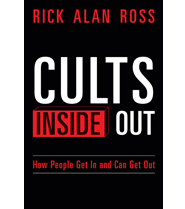The Unification Church dissolution and Japan’s evolving religious governance
Published By admin
In March 2025, the Tokyo District Court ordered the dissolution of the Family Federation for World Peace and Unification — formerly the Unification Church — following decades of controversies surrounding its business practices and ‘spiritual sales’. While the Church has appealed the decision and may continue operating under a different form, the ruling raises broader questions about the boundaries of religious freedom in Japan.
On 25 March 2025, the Tokyo District Court ordered the dissolution of the Family Federation for World Peace and Unification (formerly the Unification Church). The ruling is the latest development in a decades-long dispute between the Church and disenfranchised former members — which became widely known in Japan following the assassination of former prime minister Shinzo Abe in 2022.
The Unification Church has operated in Japan since the late 1950s. For most of this time, it has maintained a working relationship with conservative politicians, particularly within the ruling Liberal Democratic Party (LDP). Church founder Sun Myung Moon was fiercely anti-communist and the Church’s antagonistic view of left-wing political groups survived the end of the Cold War. This was the foundation for the Church’s collaboration with LDP lawmakers.
Under Article 20 of Japan’s 1947 Constitution, public officials are prohibited from carrying out any ‘religious activities’, but there is no ban on religious organisations engaging in politics, provided they do not ‘exercise any political authority’. In exchange for their continued goodwill, the Unification Church supported conservative lawmakers during election campaigns, including by providing a reliable supply of volunteers. It was this decades-long partnership that was brought to light after Abe’s assassination and which forced then-prime minister Fumio Kishida to publicly distance the LDP from the Church.
At the same time, public awareness grew of the various charges of bad practice aimed at the Unification Church and its affiliates, particularly its business practices and ‘spiritual sales’. Though controversies around these practices go back to the 1980s, it was only after Abe’s assassination that public pressure forced the government to consider legal action against the Church.
The government’s reluctance to take legal action against the Unification Church until 2022 stemmed from Japan’s strong constitutional protections for religious freedom, which have historically limited state intervention in religious affairs. Under the postwar Constitution, the Japanese state has maintained a principled distance from religious actors, allowing religious organisations a high degree of autonomy and privacy. Japanese courts have tended to hand down rulings in favour of the religious freedom of individuals who deviate from common norms, such as the Jehovah’s Witnesses’ right to abstain from blood transfusions or refusal to partake in Kendo practice in school.
The attitude of the Japanese state changed after the new religious group Aum Shinrikyo released sarin gas in the Tokyo subway in 1995. When it became known that the group had used its status as a religious corporation to plan and carry out these activities in secret, support increased for greater government oversight of religious organisations. This coincided with a general shift in the public perception of ‘new’ religions, as public tolerance for groups such as Soka Gakkai and Jehovah’s Witnesses waned.
But the state still maintains a high degree of discretion in its relationships with organisations registered under the Religious Juridical Persons Law. Aum Shinrikyo was the first to be dissolved through a court order, upheld by the Supreme Court in 1996, and the three decades since have seen only two more such incidents. In 2002, the Myokakuji group was dissolved after its leaders were convicted of fraud and in 2006, the Osaka High Court upheld a decision to dissolve the religious corporation Dainichizan Hokekyoji following a civil lawsuit involving a dispute between private actors.
The lawsuit seeking the dissolution of the Unification Church was filed by the Ministry of Education, Culture, Sports, Science and Technology, which registers nationally active religious corporations. Unlike the Aum Shinrikyo and Myokakuji incidents, the lawsuit was brought under Japan’s Civil Code. Though this places the case in the same category as the Dainichizan Hokekyoji case, it is the first time that a public organ has initiated the dissolution of a religious corporation without pursuing criminal charges.
Religious freedom in Japan is not without conditions. Article 12 of the Constitution provides that all fundamental freedoms must be utilised for ‘public welfare’. This is echoed in Article 81 of the Religious Corporations Act, which stipulates the conditions under which religious corporations can be dissolved. This includes when a corporation is responsible for actions that ‘significantly cause harm to public welfare’. It is worth noting that such conditions can also be found in Article 18 of the International Covenant on Civil and Political Rights, to which Japan has been a signatory of since 1978.
Content retrieved from: https://eastasiaforum.org/2025/05/03/the-unification-church-dissolution-and-japans-evolving-religious-governance/.






